Money Teaching Resources
Bring Australian money and financial literacy concepts into your primary school classroom this year with worksheets, games and more resources designed to ensure your students can recognise and count coins and notes, understand the value of different currency denominations and so much more!
This money teacher resources collection is aligned with standards in the Australian maths curriculum, and you'll find everything you need to teach build primary students' understanding of financial transactions and decision-making.
Teaching about money for the very first time? Take a look at this guide from the expert teachers of Teach Starter to help you help your students with this real-world maths concept!
What Is Money? A Kid-Friendly Definition
There's an old saying that money makes the world go round, but what is money really? How do you explain it to your students? Here's a definition of money that we use with our own students!
Money is something that we use to exchange for goods or services.
For example, if you want to buy a new video game, you will need money to pay for it!
What Is a Dollar? A Kid-Friendly Definition
Dollar is another vocabulary word key to teaching students about money.
A dollar is the basic unit of money that Australians use every day.
Some other countries around the world, including the United States and Canada, also base their money system around the dollar.
To represent a dollar, we use a special symbol called the dollar sign, which looks like this: $.
What Is a Cent? A Kid-Friendly Definition
A cent is another unit of money that is used in Australia. It is equal to one hundredth of a dollar.
To represent a cent, we use a special symbol called the cent sign, which looks like this: ¢.
Australian Notes and Coins — Currency Explained
Currency is a word that we use to describe the form of money that we use to pay for things.
Here in Australia, our currency is made by the Royal Australian Mint and the Reserve Bank of Australia, which are special parts of the Australian government.
Australian currency can be made out of special paper that we call a banknote or note. Currency can also be made out of pieces of metal that we call coins.
These notes and coins each have numbers assigned to them that let us know their value. For example, an Australian dollar is equal to 100 cents.
So, what are the Australian coins and notes that your students should know about? Let's take a look!
Australian Coins
The Royal Australian Mint produces six different Australian coins, all of which we can use to purchase goods or pay for services. These include:
- 5 cent coin
- 10 cent coin
- 20 cent coin
- 50 cent coin
- 1 dollar coin
- 2 dollar coin
Australian Notes
There are currently 5 different Australian notes or banknotes that you may find in your piggybank or at the store.
These notes represent the following denominations:
- $5
- $10
- $20
- $50
- $100
- Plus Plan
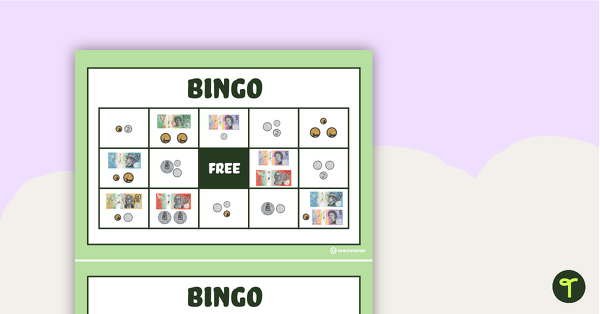
Money Bingo – Australian Currency
32 different bingo cards using notes and coins.
- Plus Plan
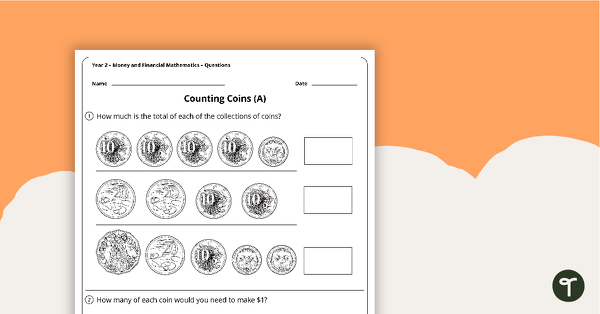
Money and Financial Mathematics Worksheets - Year 2
6 money and financial mathematics worksheets linked to the Australian Curriculum.
- Plus Plan
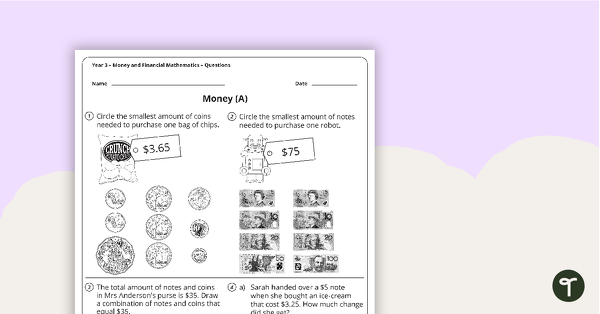
Money and Financial Mathematics Worksheets - Year 3
2 money and financial mathematics worksheets linked to the Australian Curriculum.
- Plus Plan
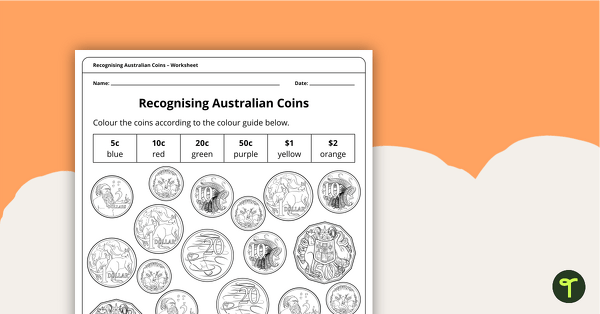
Recognising Australian Coins – Worksheet
Explore Australian coins with this simple worksheet.
- Plus Plan
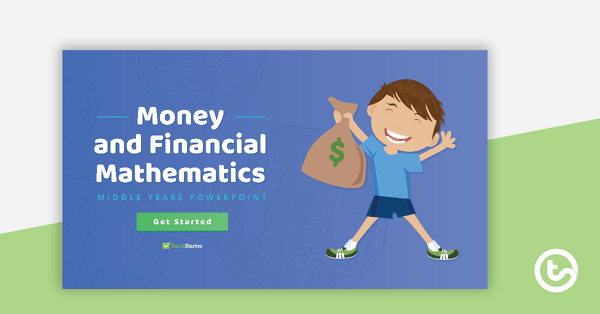
Money and Financial Mathematics - Middle Years Interactive PowerPoint
An engaging 44 slide interactive PowerPoint to use in the classroom when learning about money and financial mathematics
- Plus Plan
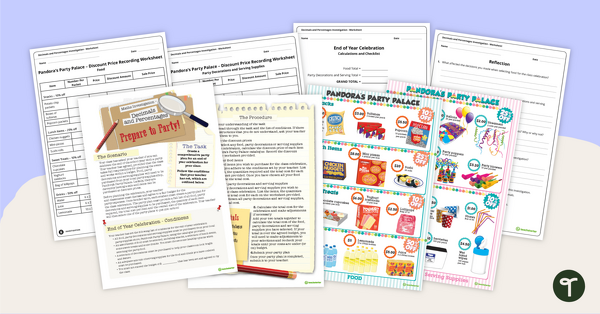
Decimals and Percentages Maths Investigation – Plan a Party!
Get your students connecting their maths knowledge to the real world with this decimals and percentages party planning project.
- Plus Plan
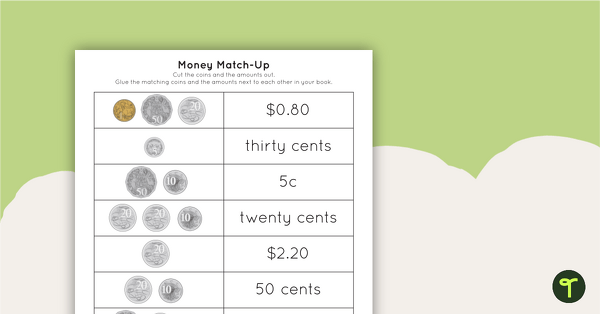
Money Match-Up Activity (Australian Currency)
An activity to help students recognise Australian coins and their combined amounts.
- Plus Plan
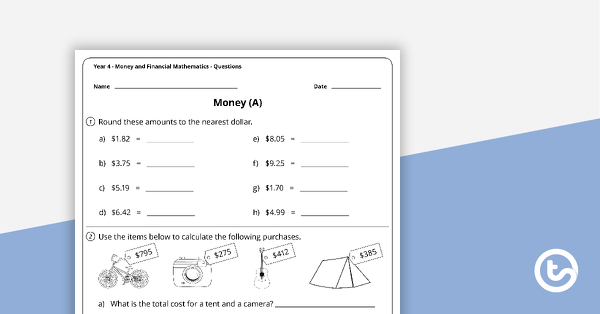
Money and Financial Mathematics Worksheets - Year 4
2 money and financial mathematics worksheets linked to the Australian Curriculum.
- Plus Plan
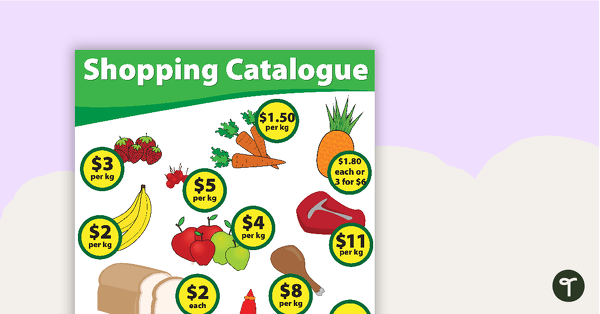
Shopping Catalogue with Worksheet
A shopping catalogue and worksheet to use when working on financial mathematics.
- Free Plan
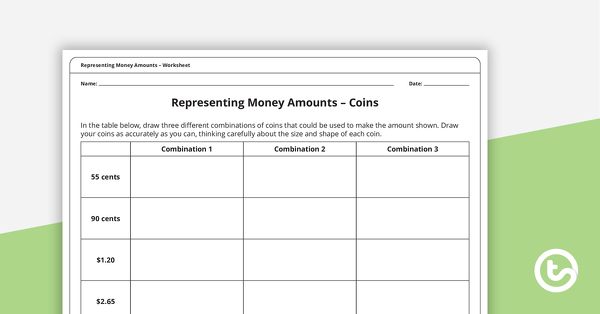
Representing Money Amounts – Worksheet
A worksheet for students to practise representing money amounts in multiple ways.
- Free Plan
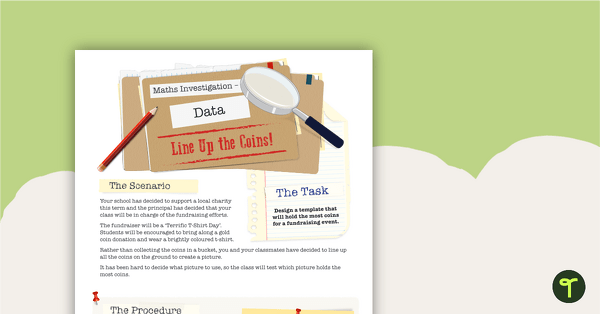
Data Maths Investigation – Line Up the Coins
A mathematics investigation about data, embedded in a real-world context.
- Free Plan
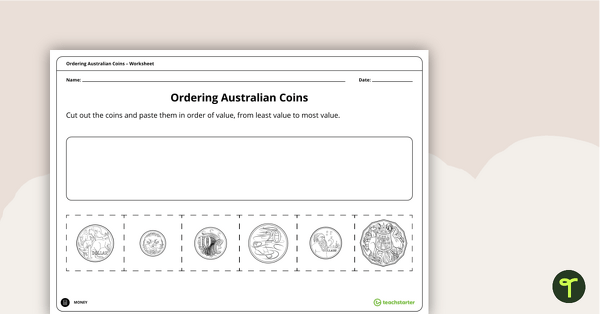
Ordering Australian Coins – Worksheet
A worksheet for students to practise ordering Australian coins.
- Plus Plan
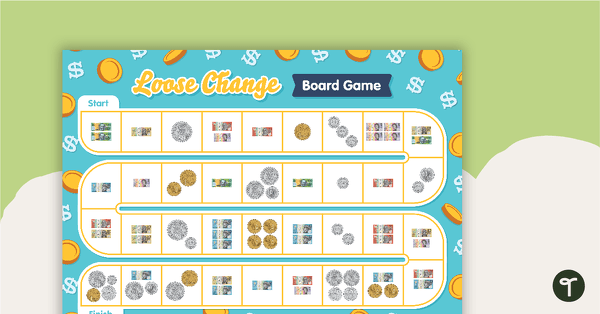
Loose Change (Coins and Notes) – Board Game
A board game to encourage students to learn about Australian coins and notes.
- Plus Plan

What's it Worth? Australian Currency Game
Use this What's it Worth? game when learning about the value of coins.
- Plus Plan
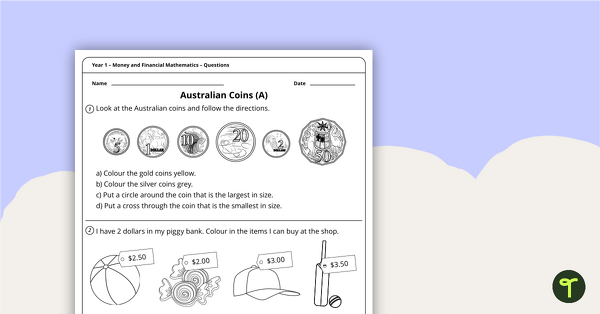
Money Worksheets for Year 1
2 money worksheets linked to the Australian Curriculum.
- Plus Plan
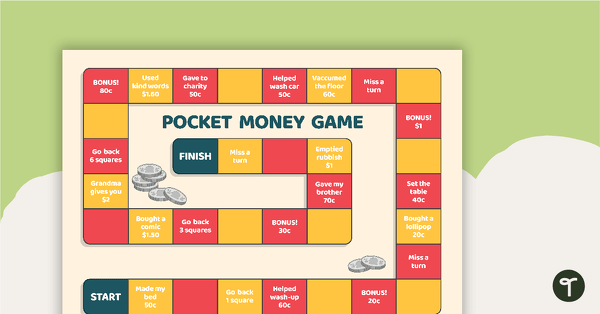
Pocket Money Board Game
A fun game to use when learning about money.
- Plus Plan
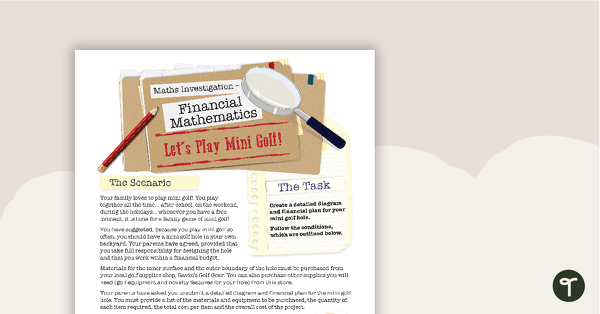
Financial Mathematics Maths Investigation – Let's Play Mini Golf!
A mathematics investigation about financial mathematics and measurement, embedded in a real-world context.
- Plus Plan
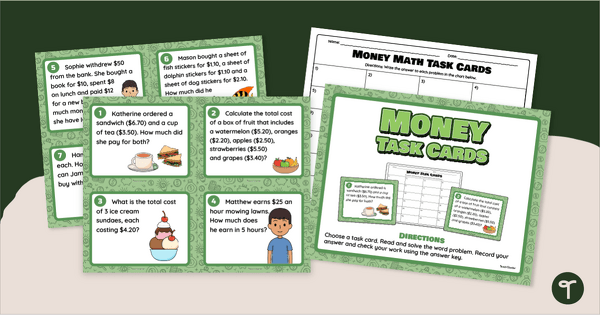
Money Task Cards - Australian Currency
A set of 12 task cards relating to simple financial transactions.
- Plus Plan
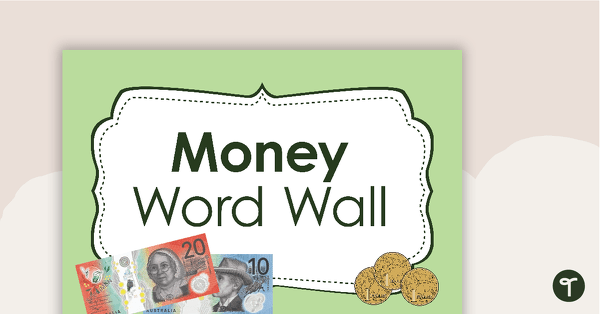
Australian Money Word Wall Vocabulary
Seventy-five money vocabulary cards.
- Plus Plan
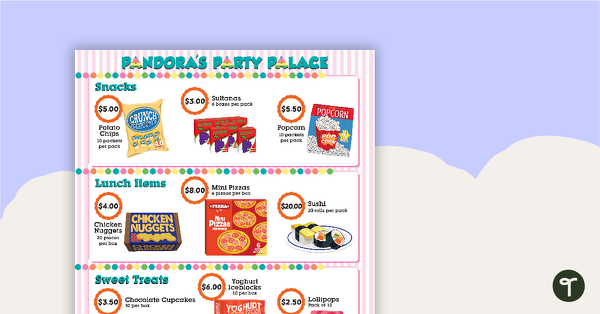
Pandora's Party Palace Maths Activity – Middle Years
16 mathematics problem solving task cards involving money in a real-world context.
- Plus Plan
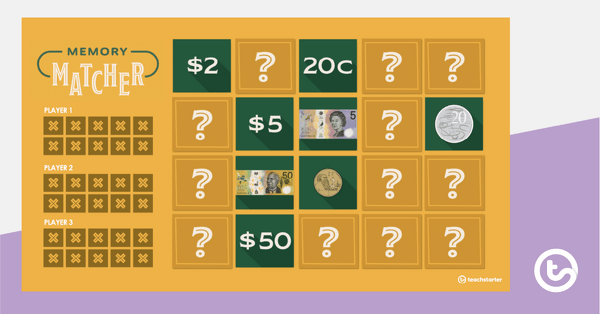
Memory Matcher PowerPoint – Australian Coins and Notes
An interactive memory match up game to consolidate students' recognition of Australian coins and notes.
- Plus Plan
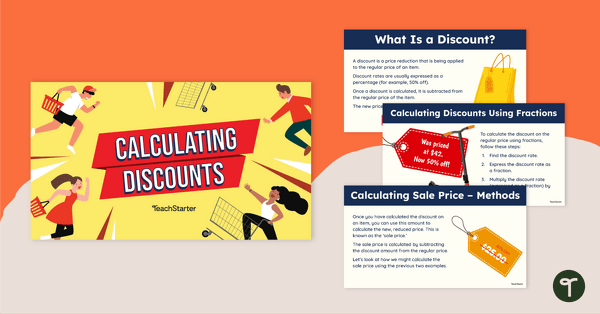
Calculating Discounts and Sale Price Teaching Slides
Teach your students how to calculate discounts and sale prices using fractions and decimals with this comprehensive teaching presentation.
- Plus Plan
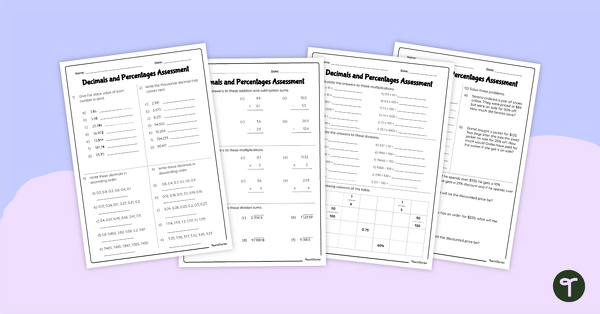
Decimals and Percentages Assessment
Assess students' knowledge of various decimals and percentages concepts with this four-page worksheet.
- Plus Plan
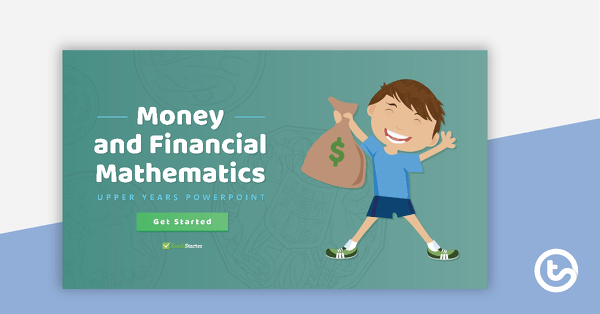
Money and Financial Mathematics - Upper Years Interactive PowerPoint
An engaging 44 slide interactive PowerPoint to use in the Upper Years classroom when learning about money and financial mathematics
- Plus Plan
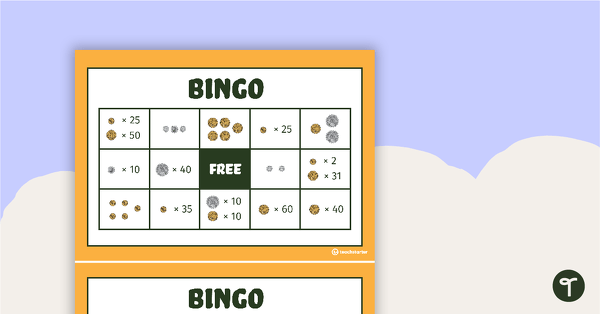
Money Bingo – Australian Coins
32 different bingo cards using only coins.
- Plus Plan
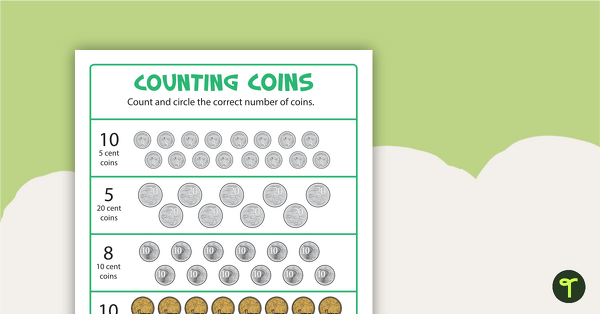
Counting Coins Worksheet
A counting worksheet using Australian coins.
- Plus Plan

Pandora's Party Palace Maths Activity – Upper Years
Sixteen mathematics problem-solving task cards involving money in a real-world context.
- Plus Plan
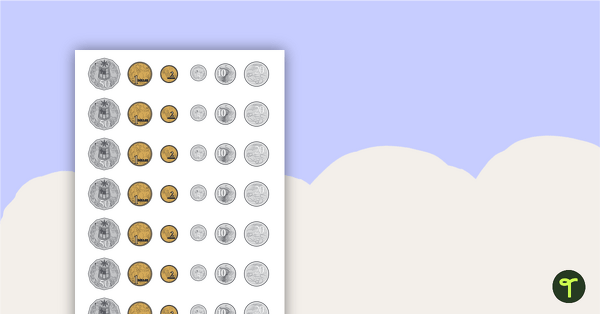
Piggy Bank Pigs - Australian Coins
Piggy Bank Pigs are a fun, hands on way for students to learn each of the coins and how their values add up to a certain amount.
- Plus Plan
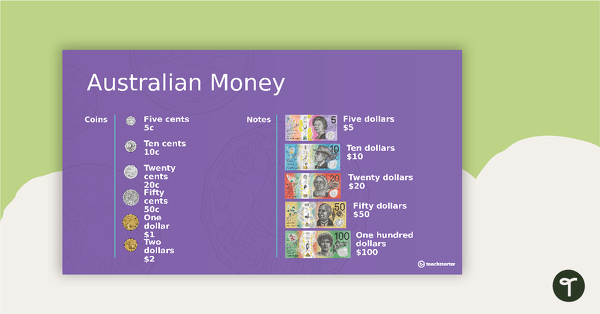
Money and Financial Mathematics – Lower Years Interactive PowerPoint
An engaging 44-slide interactive PowerPoint to use in the lower years classroom when learning about money and financial mathematics.
- Plus Plan
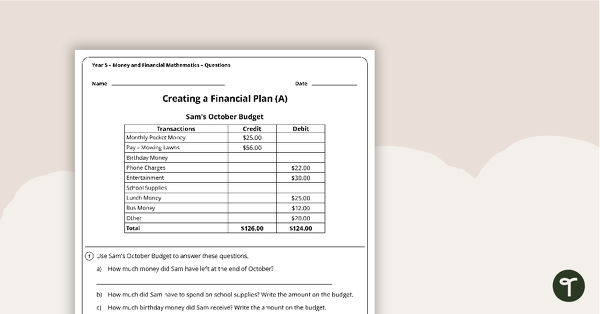
Money and Financial Mathematics Worksheets - Year 5
2 money and financial mathematics worksheets linked to the Australian Curriculum.
- Free Plan
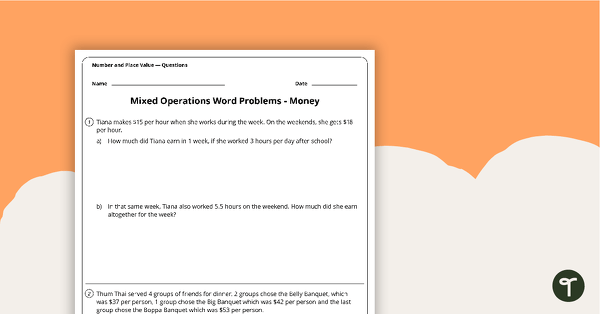
Word Problem Worksheet - Money
Money word problem worksheet with answers.
- Plus Plan
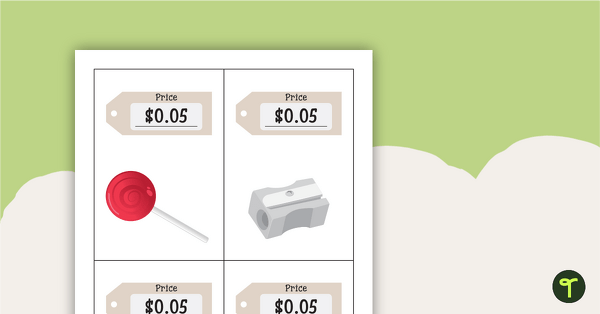
Picture Cards with Price Tags and Coins (Australian Currency)
A variety of different objects with price tags and coin cards.